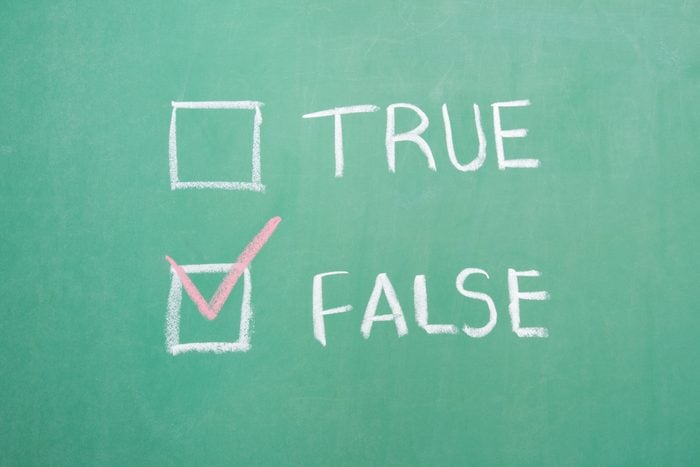
Prepare to get schooled
If you have kids in school, or even if you don’t, you’ve probably realized that there’s a lot about the day-to-day of school that’s changed in recent years. Everything from the way they solve basic math to some of the facts you thought were set in stone are different from your own school days. But you still might be surprised to learn that these basic tenets of the educational experience have been shown to false. Time marches on! Plus, find out the things your kids will learn in school that you didn’t.

Dinosaurs are not extinct
Kindergartners will laugh at you if they find out you still believe dinosaurs died out 65 million years ago. They’ll point out the blue jays, pigeons, hummingbirds, and seagulls flying around your neighborhood with their dinosaur genes. As paleontologist Steve Brusatte, author of the book The Rise and Fall of the Dinosaurs, told Reader’s Digest, “Today’s birds evolved from dinosaurs, which makes them every bit as much of a dinosaur as T. rex or Triceratops.” Here are 12 more dinosaur myths you need to know.
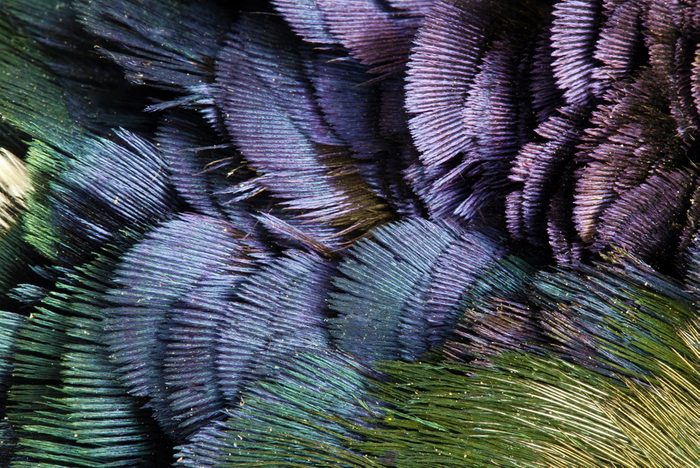
Dinosaurs don’t look like big lizards
We now know that many dinosaurs had fluffy, colorful feathers! Paleontologists have found well-preserved fossils showing some dinosaurs with feathers all over their bodies and others with just tufts of downy fluff. They’ve even been able to identify colors by studying tiny structures called melanosomes in the fossilized feathers. “It’s one of the most amazing things that’s happened in my lifetime as a scientist,” Brusatte says. Here are 12 of the world’s best dinosaur museums.
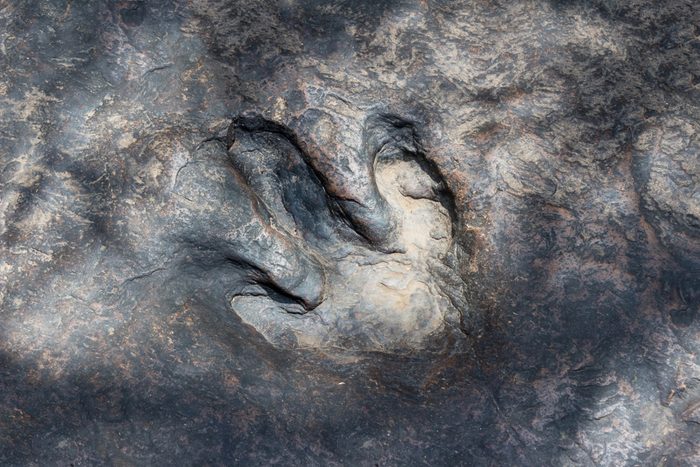
Brontosaurus is a dinosaur
I’m not sure whether it was elementary school science classes or Fred Flintstone’s Brontosaurus burgers that made the giant herbivore one of the most recognizable dinosaurs to me as a kid. But for more than a century, Brontosaurus wasn’t considered an actual dinosaur: Paleontologist Othniel Charles Marsh named the first fossil of the dinosaur in 1879, two years after he described a similar specimen and named it Apatosaurus. In 1903, researchers decided that the Brontosaurus fossil was a mislabeled Apatosaurus, and after that, they were all officially called Apatosaurus. But wait! A 2015 study explained in Scientific American that new analyses show that the two fossils are different enough to warrant separate genus names, so Brontosaurus is back (no need to unlearn it!). What’s more, the painstaking review of fossils shows that there were many more types of massive plant-eating dinosaurs known as sauropods than paleontologists had previously realized. Check out these fascinating things that could happen if dinosaurs were still alive.
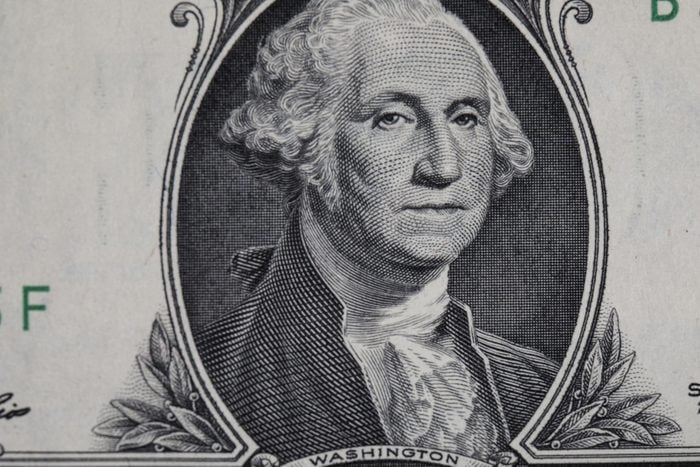
George Washington didn’t have wooden teeth
He did have awful dental problems (by the time he gave his first inaugural address in 1789, Washington only had one remaining natural tooth), but Washington never had dentures made from wood. Instead, they were complicated contraptions made from ivory, gold, and lead—some experts suspect people thought they were wooden because the ivory took on stains. Washington’s dentures also contained real teeth, probably from cows and horses and definitely from people. He saved some of his own teeth that had been pulled, and one of his account books lists a purchase of nine teeth from African-Americans enslaved at his plantation, Mount Vernon, according to the estate’s historians. Find out more weird facts about America you never learned in school.

Women suspected of being witches were not burned at the stake
First, no one was burned during the Massachusetts Bay Colony witch scare in 1692. In Europe, convicted witches were sometimes burned, but in England, they were hanged, and that’s the tradition the colonists followed after a group of young girls started having “fits” that the doctor blamed on supernatural afflictions. In all, almost 200 people were accused of being witches; 19 were convicted and hanged. One person was crushed to death under stones. Another myth about the Salem witch trials is that all the accused were women. Five of those executed (including the elderly farmer who was pressed to death) were men; plus, the accusations affected people from all circumstances and social positions. Can you correctly answer these other history questions everyone gets wrong?

There are more than three states of matter
You may have learned about three—liquid, solid, and gas. Those are the most common states of matter that we find here on Earth, but beyond our atmosphere, there’s a fourth state—plasma—and it might be the most common in the universe. When you add enough energy to an atom, its electrons can get away from its nucleus and react with a different nearby nucleus, creating plasma, which consists of highly charged particles with very high kinetic energy. Gases like neon are goaded into a plasma state by electricity to make glowing signs; stars are basically huge balls of plasma. But that’s not the only extra state of matter: In 1995, scientists created one called the Bose-Einstein condensate, where matter is super-cooled to almost absolute zero, causing molecular motion to practically stop. Nobody knows whether Bose-Einstein condensates exist in nature, but they can be made in a lab. Researchers are also investigating other states of matter, so the number could keep growing, according to Gizmodo.

We either have eight or 13 planets in our solar system
My sixth grade science teacher taught us “Mary’s violet eyes make John stay up nights plenty” (Mercury, Venus, Earth, Mars, Jupiter, Saturn, Uranus, Neptune, Pluto)—but then, in the 1990s, scientists found a doughnut-shaped region of the solar system out beyond Neptune that’s filled with asteroids, comets, and icy objects. They called it the Kuiper Belt and redefined poor little Pluto as a Kuiper Belt Object instead of a planet. While many ex-schoolchildren felt betrayed at the time, Pluto wasn’t the first planet to get demoted—it had already happened to a body called Ceres that orbits between Mars and Jupiter. Ceres was called a planet too when it was first identified in 1801, but over time astronomers realized it was part of an asteroid belt and revoked its planethood. But the story doesn’t end there—both Ceres and Pluto got bumped back up into a new category in 2006 when the International Astronomical Union declared them dwarf planets. Here are 24 more astronomy facts you never learned in school.
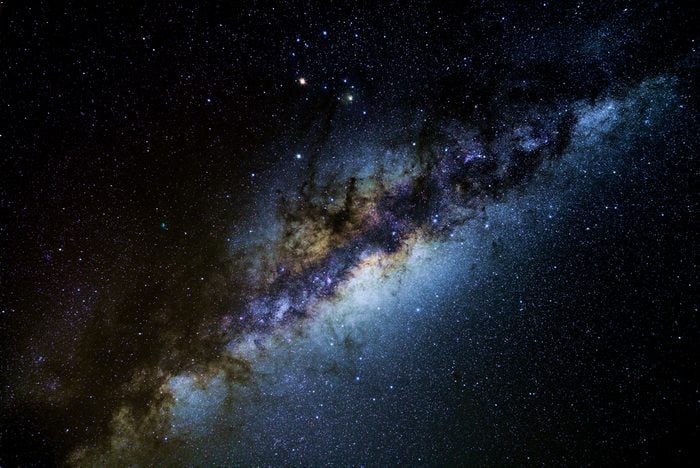
We don’t really know all the planets in our solar system
According to NASA, there are three other officially recognized dwarf planets circling our sun (all in the Kuiper Belt, with Pluto) and possibly hundreds more that haven’t been identified yet. And then there’s the mystery of Planet X—so far, it’s only hypothetical, but researchers at Caltech think it could be the size of Neptune and follow an orbit that’s circling the sun way out beyond Pluto. The final tally as of now, according to NASA, is eight planets and five dwarf planets. Don’t miss these 18 science facts you never learned in school.

A toilet doesn’t flush the opposite way in the Southern hemisphere
There’s some basis for this idea: The Coriolis effect does mean that the Earth’s rotation makes hurricanes and cyclones spin counterclockwise in the Northern Hemisphere and clockwise below the equator. But the amount of water in a toilet is too small to be affected in the same way—it circles down the drain according to whatever forces guide it within the toilet. Any tiny lack of symmetry in a drain, including buildup or a crooked installation, will direct water flow. Take a look at these facts about Earth your teacher never taught you.

Neanderthals may have been as smart as humans
New research suggests that Neanderthals were not hulking cavemen who died out because they weren’t as sophisticated as the humans with whom they coexisted and interbred. In fact, they produced cave paintings in Spain about 20,000 years before modern humans arrived in Europe, according to an article in Nature. They also used tools and made jewelry. So why did they go extinct? A 2017 study published in the journal Nature Communications suggests that they might simply have been outnumbered by the waves of Homo sapiens that filtered into their territory from Africa, beginning around 50,000 years ago; two species can’t occupy the same ecological niche without one changing or dying out. Here are 10 ancient mysteries researchers still can’t explain.
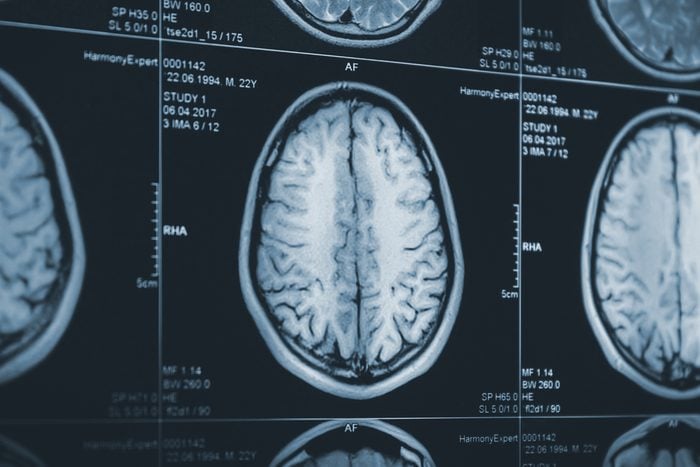
There isn’t such a thing as being left-brained or right-brained
I’ve always thought I’m left-brained, because of my analytical and logical nature, but it turns out that no studies have been able to show different areas of brain activity among people with different personality traits. Different parts of the brain definitely have different purposes—we know that from studying people who’ve suffered brain injuries or strokes, according to the Harvard Health Blog. Researchers still think control of language is located on the right side of the brain in most people, for example, and the back of the brain processes visual information. Read these facts about the brain that will blow your mind.
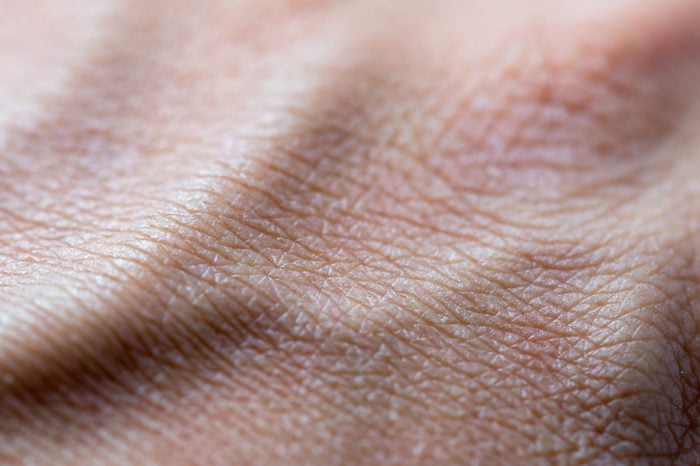
Your blood isn’t blue when its oxygen is depleted
When you look at the inside of your wrist, the veins sure might look blue, but the truth is that the blood inside is red, according to Live Science. The veins appear to be blue because of the way your skin and tissues distort the light that’s reflected back to your eye. We’re also conditioned to think of veins returning oxygen-poor blue blood to our hearts because that’s the way anatomical drawings traditionally look. But that’s just to make differentiation easier—the blood is red when it’s full of oxygen in our arteries, and it’s still red (though darker) when the oxygen has been depleted and it’s traveling back to our hearts through veins: Iron-rich hemoglobin gives it that color. Other animals, including horseshoe crabs and squid, do have blue blood, however, because the chemical that transports their oxygen contains copper. There are animals out there with green and even clear blood.
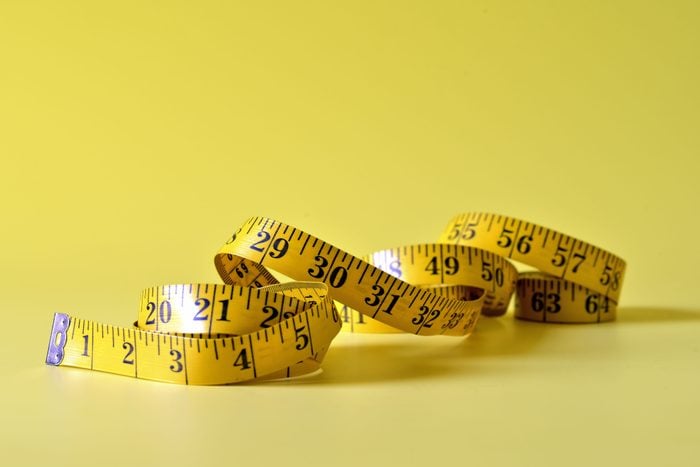
Napoleon Bonaparte wasn’t that short
He was actually about average height for his time—approximately 5 feet 7 inches—but cartoons published in England depicted him as short, according to a 2016 column by Tristin Hopper in the Canadian newspaper the National Post. When he died, the people present said he measured 5 feet 2 inches, but that was because of a difference between French and British units of measurement. However, he had already been depicted for years as a small, petty, childish person in British cartoons. Here are more favorite facts you’ve always believed that are totally false.

You have more than five senses
The big five—touch, taste, smell, sight, and hearing—are our most basic senses, but we’re taking in information through a wealth of other mechanisms. Proprioception tells us where our bodies are in space, allowing us to stay balanced, according to Live Science. Kinesthetic receptors detect stretching in muscles and tendons, which helps us keep track of our various body parts. We also have receptors to keep track of how much oxygen is flowing through our arteries.

Your tongue doesn’t have a taste map
Did you learn about a “taste map” when you were a kid? It’s hooey, apparently, writes University of Florida professor Steven D. Munger in the news website The Conversation. The receptors that detect sweet, salty, sour, bitter, and umami are evenly distributed all over your tongue. The taste map grew out of a graph published by a German scientist in a paper in 1901—it was an imprecise representation of his experimental findings, but others took it literally and expanded on it during the decades that followed.

A swallowed piece of gum doesn’t take seven years to digest
Nobody knows where this myth came from, but it’s been passed along through generations of school-aged kids gulping down their gum to avoid getting busted chewing it in class. A Florida pediatric gastroenterologist named David Milov tells Scientific American that it’s definitely not true—although he does state that he occasionally comes across a hunk of chewed gum in the digestive tract during colonoscopies or endoscopies. But “usually it’s not something that’s any more than a week old.” Most gum passes right through the digestive system, so this stomach-churning myth is one of the lies you were told as a kid that you still believe.
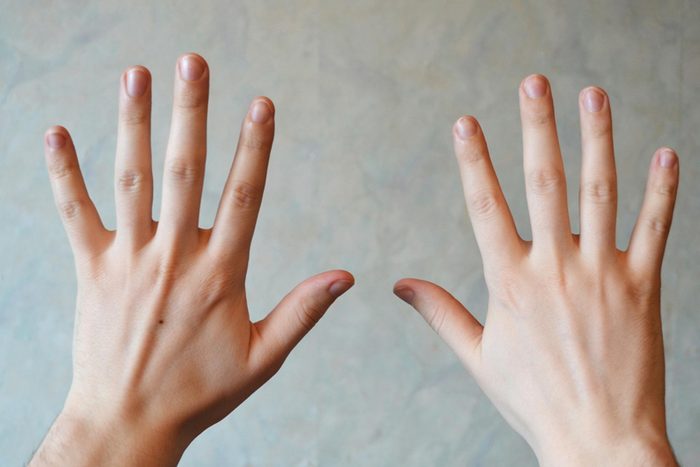
Hair and fingernails don’t continue to grow after a person dies
Once oxygenated blood stops circulating at death, the cells that produce new hair and fingernail tissue can no longer function. The idea that hair and nails keep growing is a misinterpretation of what actually happens to a corpse in the hours and days after a person dies, according to the BBC. The skin dries out and retracts at the fingertips, making nails look longer. Men’s facial skin also gets dehydrated, which can extend stubble and make it appear to have grown longer.
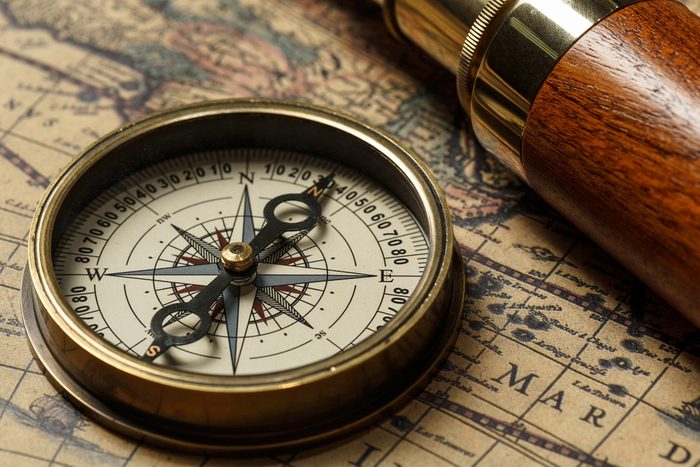
Columbus didn’t discover the Americas
Obviously, this is wrong, since Native Americans had been living on the continents for at least 15,000 years. But even if you think he was the first European to set foot in the Americas, you’d be wrong—the Viking explorer Leif Erikson seems to have reached North America 500 years before Columbus came along. Plus, Columbus only ever explored the Bahamas, Hispaniola, and a bit of the Central and South American coastlines—and he never realized he’d found a whole continent, according to the Washington Post. Here are 17 more facts about America you didn’t learn in school.
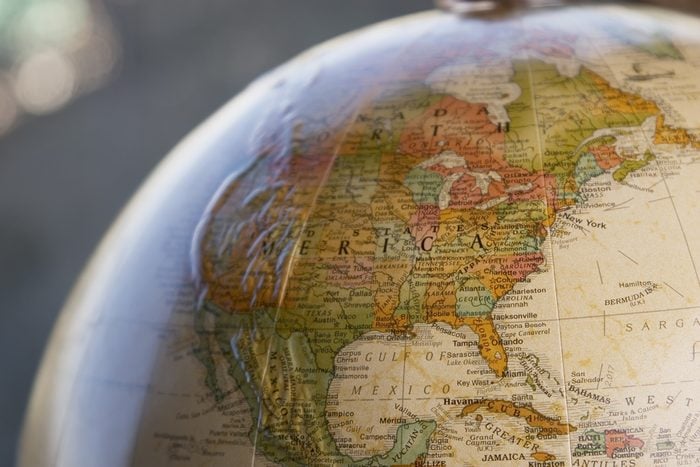
Columbus didn’t prove the Earth was round
The Washington Post also reports that educated people had known for centuries that the Earth was round by the time Columbus set off on his journey. During the Middle Ages, some Europeans did start believing the Earth was flat despite the ancient Greeks stating the planet was a sphere during the time of Pythagoras in the sixth century B.C.E. By 1492, nobody worried that a ship at sea would fall over the planet’s edge. The myth might have started with the publication of Washington Irving’s 1828 fictionalized biography, The Life and Voyages of Christopher Columbus, which says erroneously that his journey to the Americas proved that Earth was round.
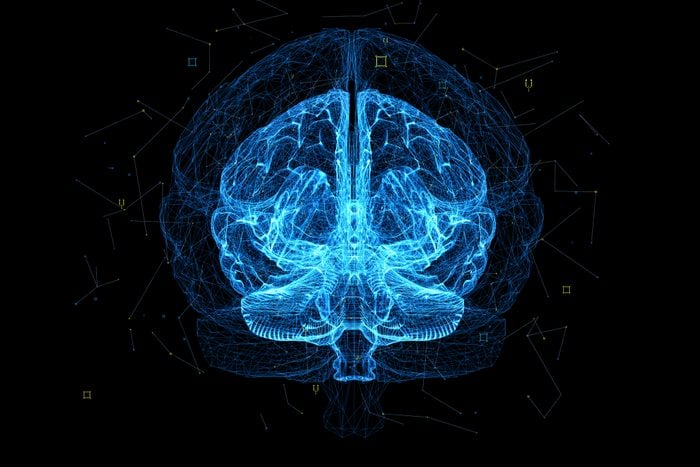
We use way more than 10 percent of our brains
Although it sometimes seems like we’re not running on all cylinders, brain scans show activity throughout the organ, even when we’re resting. Nobody’s sure where the idea came from that 90 percent of our brain tissue is going unused, but any neurologist will tell you that’s definitely wrong. Learn more popular “facts” about the brain that actually aren’t true.

ROYGBIV is not the lineup of colors in the rainbow
You probably remember learning the “ROYGBIV” initialism to represent the colors of the rainbow: Red, Orange, Yellow, Green, Blue, Indigo, and Violet. Today, though, everyone from teachers to color specialists have begun to forego indigo. The rainbow LGBT Pride flag also only has six colors—and many people are left to wonder why indigo, which seems to be just an arbitrary combination of two of the other colors (blue and purple/violet), found its way into the rainbow. Well, for that we can thank Sir Isaac Newton, a superstitious sort who believed that the number seven had a cosmic significance, per occult beliefs of the time. So he believed that seven colors, no more, no less, had to come together to make white, and chose indigo to join the other colors, potentially because of the popularity of indigo dye at the time.
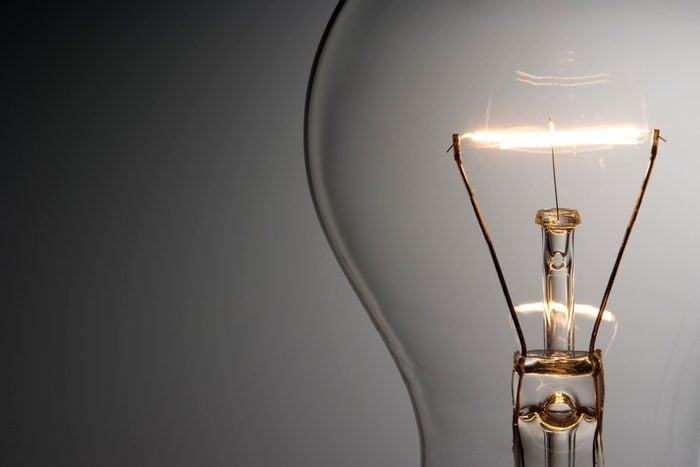
Thomas Edison did not invent the lightbulb
Not alone, anyway. Many historical sources now believe that the light bulb was the work of a group of scientists and that Edison receives all of the credit for a few reasons. A man named Humphry Davy created the first electric light in 1802, and an inventor named Joseph Wilson Swan created a working prototype of a light bulb, using carbonized paper filaments, in 1860. Edison, though, rode their coattails in a way and was able to eliminate some of the technical problems of earlier prototype bulbs to make his invention more practical. His was the first “practical and inexpensive” version, per Live Science, but it certainly wasn’t the first electric light bulb. Check out these things you won’t see in schools anymore.

The “I before E, except after C” rule does not always apply
In fact, there are so many instances where it doesn’t apply that even using the rule might seem silly when you stop to consider it. The rule, recited to elementary schoolers, works in words like friend, believe, and receive…but doesn’t in many, many other cases. In fact, estimates approximate that the rule is wrong 75 percent of the time—words like weird, glacier, and science break the rule outright. Even the “…except when it says ‘A,’ as in ‘neighbor’ and ‘weigh'” addendum doesn’t help much. Find out 14 more rules your English teacher lied to you about.

The Great Wall of China is not the only manmade structure visible from space
This is untrue on multiple counts. For one thing, in 2003, Chinese astronaut Yang Liwei went up into space and subsequently claimed that he couldn’t see the Great Wall. Other space explorers have claimed that you can see it, but only under certain conditions, such as when there’s snow on it so that it stands out more from the surrounding land. Not to mention, you can see plenty of other manmade structures from space, including the pyramids and even some roadways and bridges. Here are 15 things that can actually be seen from space.

It’s impossible to fold a piece of paper in half more than seven times
This common “fact” claims that folding a piece of paper, no matter the size, in half eight times or more would require an impossible amount of energy to crease the paper. But MythBusters folded a football field–sized piece of paper in half 11 times, and a California high school student also challenged it by folding a long sheet of toilet paper in half 12 times, in the same direction. And the facts we learn in school aren’t the only things to change over time—these are the school subjects that aren’t taught anymore, period.